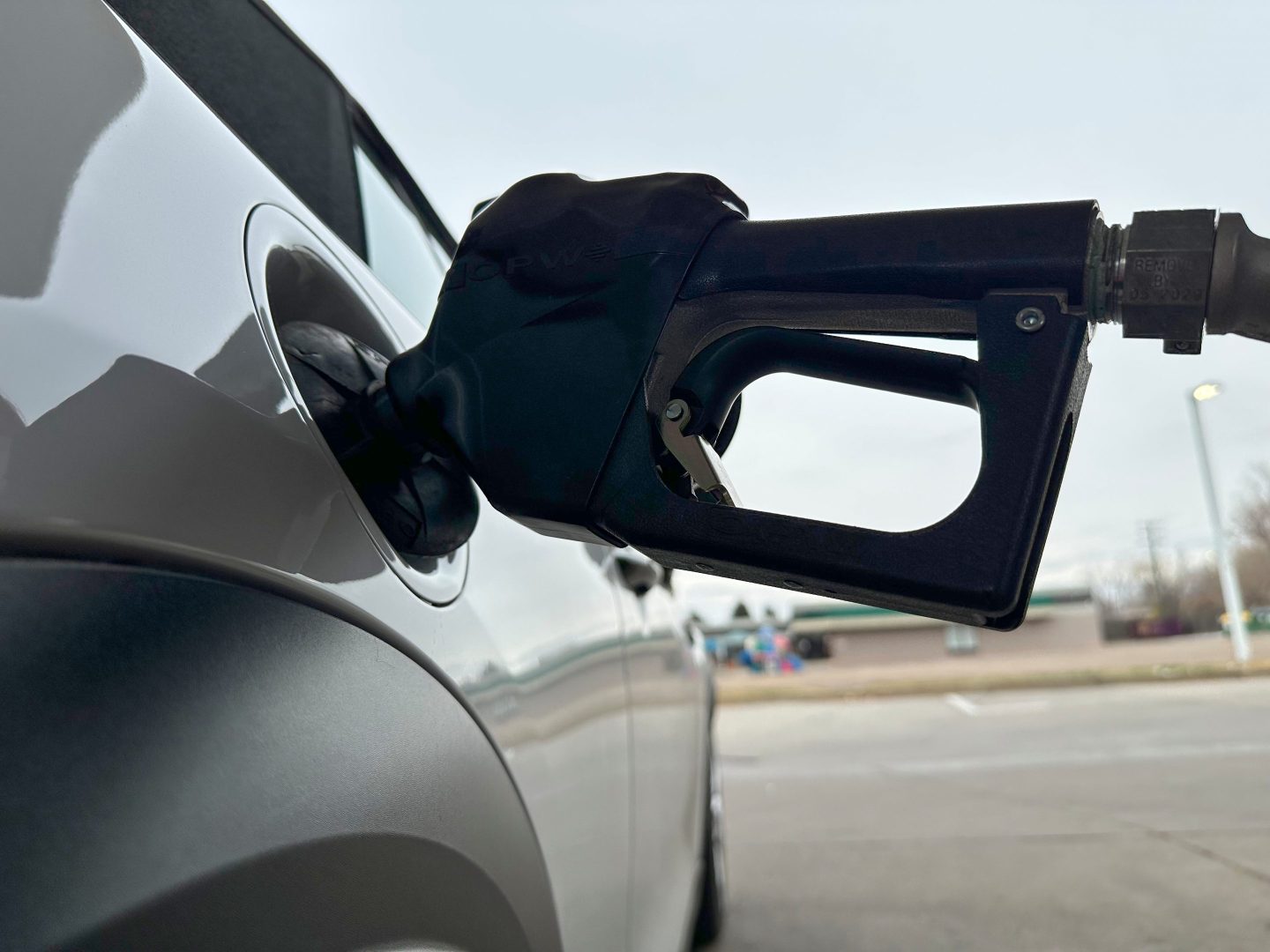Picture an oilfield. Chances are you see a greasy drilling rig surrounded by a group of equally greased-up and grizzled oilmen, moving heavy equipment in a dangerous and labor-intensive environment.
Not these days. The coverall-adorned roughnecks of yesteryear today are now much fewer and more likely to sit in data vans monitoring the computer screens instead of constantly configuring all the pipes and tools manually. “The days of the mud-soaked rig hand with a cigarette in his mouth are behind us,” said Dan Pickering, founder and chief investment officer for Pickering Energy Partners consulting and research firm. “The hardest and riskiest jobs are getting gradually replaced with technology. They can’t all be completely replaced, but it’s happening.”
The transformation is just over a decade in the making, but now it’s supercharged by AI. In industry parlance, the AI-controlled rigs can now use ‘autonomous geosteering’—drilling many thousands of feet underground without human involvement. Oilfields are overseen remotely, requiring fewer people and resources onsite—cutting costs and saving valuable time. “You basically sit back in the chair, take it easy, have a cup of coffee, and you watch what is happening on the screen,” said Rakesh Jaggi, president of digital and integration for SLB, the world’s largest oilfield services firm.
“Some of the things that we can do today with these autonomous operations are mindboggling. I get goosebumps even now,” Jaggi told Fortune. “The first time, it’s like, ‘Oh, wow, this is magic.'”
From late 2014 until now, the U.S. shed almost 35% of its oil, gas, and mining jobs, according to the Bureau of Labor Statistics, down about 270,000 jobs, including 12,000 positions just since April. Those losses range from geoscientists and petroleum engineers to blue-collar roustabouts and wellhead pumpers. ConocoPhillips, Chevron, and BP, for instance, are laying off thousands of workers each this year and next despite remaining highly profitable.
Apart from tech gains and industry consolidation, a big factor is the cyclical downturns in oil prices, forcing the industry to lean into efficiencies and innovations, especially when OPEC ramps up volumes to fight for market share, including in late 2014 and now in 2025. Gone is the heyday of $100 per barrel crude oil from 2011 to 2014. Today it’s about $63. Since 2014, the number of active drilling rigs plunged 70% down to 539 rigs as of mid-September, including the loss of about 50 rigs in 12 months.
Many industries falsely brag of doing more with less, but the energy sector has truly meant it, said Ken Medlock, Rice University fellow in energy and resource economics. “With AI integration, you’re going to see that continue. Now there’s potential to see this on steroids,” Medlock said. “There’s a much stronger push to reduce the labor intensity of drilling and production activities.”

Victims of their own success
The slow but steady disappearance of the roughnecks may be the most visible sign things are changing fast, but throughout the production process companies are making tweaks in their systems to be more efficient. Wells are drilled 4 miles horizontally as opposed to 1 mile a decade ago, requiring fewer crews with fewer people.
Denver’s Liberty Energy is a case study in how quickly AI is changing things. The nearly 15-year-old company quickly grew into a U.S. hydraulic fracturing, or fracking, leader. Founder and former CEO Chris Wright is even President Trump’s new energy secretary.
“We’re already in this world today where we’re going to run and execute the frac quite literally with a computer. AI can do all of it,” said Ron Gusek, who replaced Wright as CEO of Liberty. “I can’t think of a time in Liberty’s history where we’ve been able to move the needle that dramatically in less than 12 months. It’s just phenomenal.”
The number of frac fleets required in the U.S. dipped more than 50% in six years as crews are increasingly able to frac larger wells more quickly, including two wells at a time, called simul-frac.
More automation has been incorporated for the past several years with smarter rigs and more, but autonomous operations are new. That’s the difference between using GPS to help you navigate versus sitting idly in a self-driving car, said Jaggi of oil giant SLB, arguing the Neuro and DrillOps Automate solutions by SLB (No. 437 on the Fortune Global 500) drive the drill bit for you.
These improving tech results also are the product of necessity. The U.S. shale industry is maturing, and the best wells already are drilled. To get the same results, increasingly longer wells are needed, so financial savings must be found wherever possible through time savings, production efficiencies, and smaller payrolls.
“The age of easy oil is gone,” said Jaggi of energy giant SLB. “To find the same amount of oil is a lot more challenging than it used to be.” Big Data and AI help balance the scale, he said.
Chevron partners with Halliburton (No. 194 on the Fortune 500), for instance, on its AI fracking system, called Zeus IQ, that allows for quick, autonomous decision-making. But there’s still the corporate and human hurdle of fully trusting the tech when each well costs millions.
It’s the difference between determining whether people will serve as referees regularly intervening as needed, or if they will only operate as glorified emergency shutdown buttons, said Steve Bowman, general manager of AI for Chevron (No. 16 on the Fortune 500).
“The bar to get individuals to really lean in and trust those models is incredibly high because people understand the stakes of the game,” Bowman said.
So, the human element won’t be eliminated, just substantially reduced. As Gusek added, “We’re still looking for mechanically inclined people that don’t mind being out in the elements for 12 hours a day on a shift, whether it’s 40 [degrees] below or 100 and above. I don’t see that going away for a long time.”

Nibbling around the edges
Almost every industry is figuring out how to cut costs in back-office operations, supply chains, and logistics with AI.
The AI programs even make work easier for the so-called landman jobs–nothing like Billy Bob Thornton’s over-the-top “Landman” drama–which handle property research and land deal negotiations—all of which are incredibly important to legally allow for the drilling in the first place.
Energy research firm Enverus’ Courthouse application allows the landman to sort through hundreds of millions of public acreage and mineral lease documents in every county. “A lot of these documents are of poor image quality. They’re structured differently. They were written by different law firms in different decades. The key information is not in the same place, and every document is kind of all over the place,” said Jimmy Fortuna, Enverus chief product officer.
The AI organizes and summarizes the data in seconds, he said, saving maybe 30 minutes of time per document.
While the people savings from technology are huge, said Ed Hirs, University of Houston energy economist, the time savings from automation and fewer human moving parts is just as valuable—the elimination of non-productive time.
“There are actually fewer things to go wrong,” Hirs said. “You wind up saving downtimes and extra trips. It’s all about this nibbling around the edges, making those incremental improvements, and, when we add them all together, that’s a significant cost reduction.”
The time to drill a longer well shrinks from 30 days to almost 20. That means the company can deploy each rig much more frequently and pay for fewer expensive rigs, while still getting the same or better results, he said.
New college graduates are struggling to find oil and gas right now, Hirs said, but more companies are beginning to realize the value of scooping up AI-savvy young people now.
The education has quickly shifted from trying to prevent students from using ChatGPT to cheat to now teaching them how to best utilize AI in the classroom, the office, and the oil patch.
The new generation will oversee and improve the AI allowing a person to supervise a drilling project from hundreds of miles—or half a world—away.
“The oil patch of today is just much more automated,” said Dan Pickering. “It’s a bunch of cool gadgets with one or two people instead of 15. Those days are happening now, and they’re ahead of us.”













